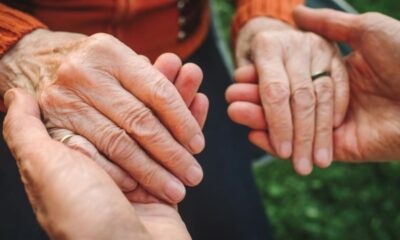Lifestyle
Communities Unite to Combat Child Hunger as Poverty Rises in Japan

Communities across Japan are mobilizing to address rising child hunger as poverty levels increase. In Saitama, a modest flat reveals the struggles of a first-year middle school student, Ai (not her real name), and her mother, Toshiko. After a divorce ten years ago, Toshiko left her job in healthcare due to mental health issues and diabetes. Now, she relies heavily on welfare support, which she describes as insufficient. “The money we get is nowhere near enough,” she explains. “Prices keep rising, but the benefits stay the same.”
Ai’s situation reflects a broader crisis. According to OECD figures, approximately 11.5 percent of children in Japan live in poverty, translating to about one in nine. Japan ranks 19th among developed nations regarding child poverty, highlighting the urgent need for intervention.
Local Efforts to Provide Support
Izumi Sekiguchi, a support worker from Sainokuni Children’s and Youth Support, visits families like Ai’s over ten times each month. “Of course, I hope her home becomes a place of comfort for her,” Sekiguchi states. “But I feel children’s environments are worsening more and more.” During her visit, she provided Ai with a supermarket lunch box, as the family often goes without meals. Ai admits, “Quite often, I only have one meal a day. Yesterday, I just had spinach miso soup. That’s it.”
In Chiba City, initiatives like the Tsugano-wa Children’s Cafeteria serve as lifelines. Operating once a month, the cafeteria prepares around 150 meals each time, primarily funded through local business donations. “This cafeteria is the thing I look forward to the most,” shared one child who visits. “At home, my parents are busy working, so they’re hardly ever there. But here I can talk to people properly.”
Director Terumi Tanaka highlights the financial strain on the operation, which costs around 100,000 yen (approximately $900) monthly. “We want the kids to eat well, so we use Koshihikari rice,” she explains, noting that rising prices make it increasingly difficult to maintain quality.
Community Solutions and Challenges
Children’s cafeterias, known as kodomo shokudo, began as grassroots responses to child poverty and have evolved into community hubs, with over 18,000 now operating across Japan. These cafeterias are often run by non-profit organizations, volunteers, or local businesses, providing free or low-cost meals in safe and welcoming environments.
Makoto Yuasa, a specially appointed professor at the University of Tokyo, attributes the growth of these cafeterias to declining community ties. “Primary schools are closing down. Shopping streets become shuttered arcades. The connections within communities are fading,” he explains. Efforts to restore these connections are evident in initiatives like Food Bank TAMA, led by Seiichiro Shibata. He collects near-expiry food from businesses and redistributes it to children’s cafeterias and families in need.
Despite the noble mission, Food Bank TAMA has faced challenges, with the amount of food received and distributed dropping by half over the past year. “Price hikes just keep coming,” Shibata says. To adapt, he installed commercial freezers at a local factory yard to store frozen food donations, including ready-to-eat chicken breast and dango dumplings.
In Hachioji, the Fukuro House children’s cafeteria benefits from these donations. “So many children come hungry. Donations like this really help,” says director Akina Hosoda, emphasizing the ongoing need for support.
The private sector has also stepped up. In Tokyo’s Itabashi Ward, a former bank branch has been transformed into Atelier Banrai Itabashi, a free facility operated by Sumitomo Mitsui Financial Group (SMFG) for upper primary school pupils. The centre includes a library, study space, and a children’s cafeteria. “It’s not just doing good for society and community,” explains SMFG staff member Ryoko Ohkaya. “It’s aligned with our strategies and focus areas.”
The facility offers rotating children’s cafeterias and hands-on programmes, including food education classes. One recent class, conducted by House Foods, taught children how to make a fruit dessert, incorporating scientific principles about texture. “I learnt that calcium and pectin together connect and make it springy,” said one child enthusiastically.
Yet, while these initiatives provide immediate relief, many are aware that they rely on fragile resources. Government subsidies, such as support of up to three million yen annually under the Local Child Life Support Project, have limited uptake due to complex application processes and low awareness.
Individuals like Tanaka and Shibata remain dedicated despite these challenges. “As long as I’m well, I want to keep doing this,” Shibata asserts. “If it helps someone, that makes me so happy.” Their commitment reflects a growing recognition of the importance of community support in combating child hunger and poverty in Japan.
-

 Lifestyle3 months ago
Lifestyle3 months agoHumanism Camp Engages 250 Youths in Summer Fest 2025
-

 Sports3 months ago
Sports3 months agoDe Minaur Triumphs at Washington Open After Thrilling Comeback
-

 Business4 months ago
Business4 months agoKenvue Dismisses CEO Thibaut Mongon as Strategic Review Advances
-

 Sports4 months ago
Sports4 months agoTupou and Daugunu Join First Nations Squad for Lions Clash
-

 Top Stories4 months ago
Top Stories4 months agoColombian Senator Miguel Uribe Shows Signs of Recovery After Attack
-

 World4 months ago
World4 months agoASEAN Gears Up for Historic Joint Meeting of Foreign and Economic Ministers
-

 Business4 months ago
Business4 months agoOil Prices Surge Following New EU Sanctions on Russia
-

 Entertainment3 months ago
Entertainment3 months agoDetaşe-Sabah Violin Ensemble Captivates at Gabala Music Festival
-

 Health3 months ago
Health3 months agoNew Study Challenges Assumptions About Aging and Inflammation
-

 Entertainment3 months ago
Entertainment3 months agoBaku Metro Extends Hours for Justin Timberlake Concert
-

 Business4 months ago
Business4 months agoU.S. House Approves Stablecoin Bill, Sends to Trump for Signature
-

 Top Stories4 months ago
Top Stories4 months agoRethinking Singapore’s F&B Regulations Amid Business Closures









